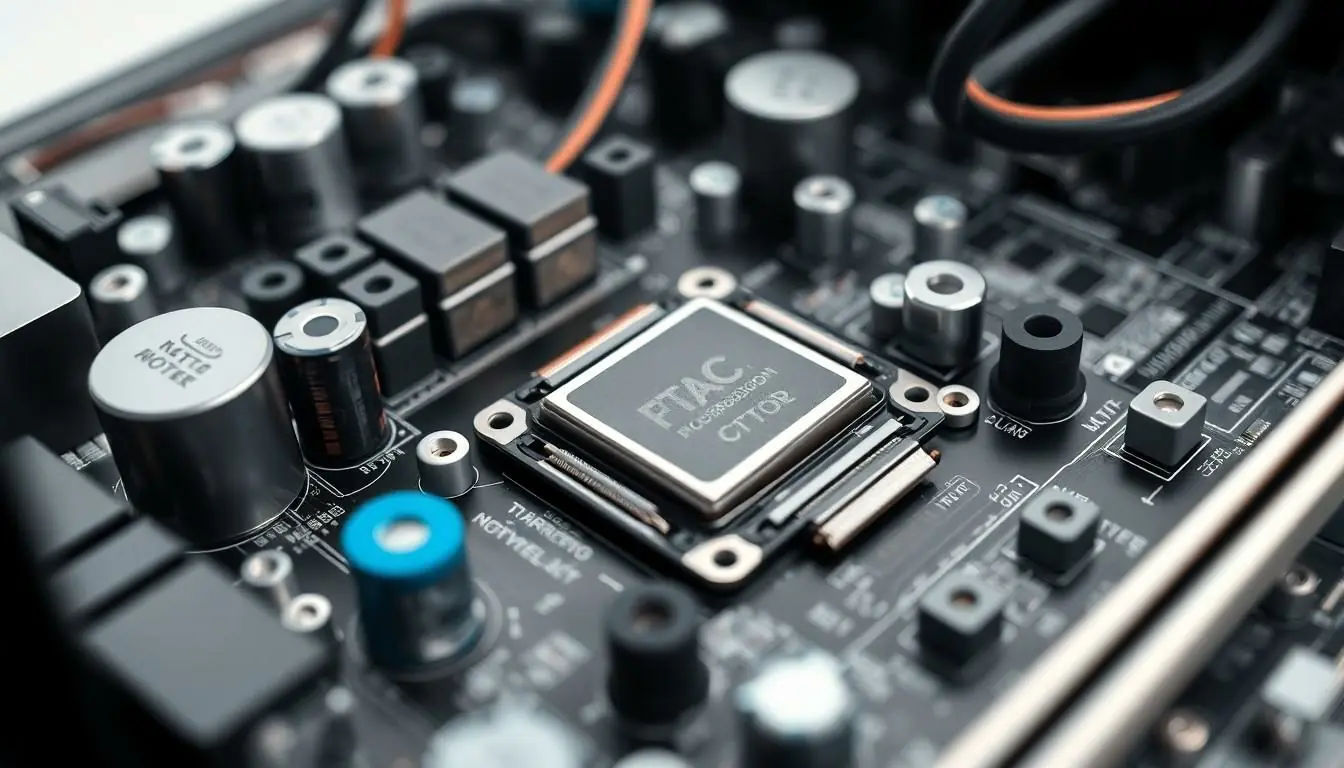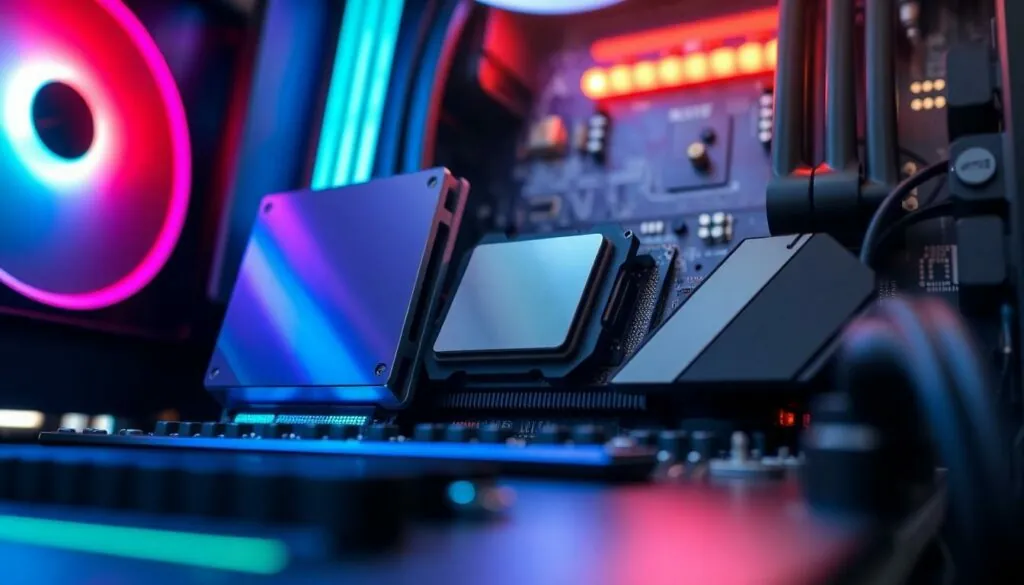Table of Contents
ToggleEver wondered what makes your computer tick? It’s not magic or a tiny wizard living inside your machine. The secret lies in a special type of software known as system software. Think of it as the unsung hero that keeps everything running smoothly, from that ancient desktop to the latest gaming rig.
Understanding Computer Hardware
Computer hardware consists of the physical components that comprise a computer. These elements are fundamental for running software and executing tasks.
Definition of Hardware
Hardware refers to the tangible parts of a computer system that users can see and touch. It includes everything from the central processing unit (CPU) to peripheral devices like keyboards and mice. Electrical and mechanical components work together to perform operations and facilitate interaction between the user and software. This connection serves as the backbone of digital computing, ensuring that tasks are executed according to software instructions.
Types of Hardware Components
Numerous hardware components contribute to a computer’s functionality. Key components include:
- Central Processing Unit (CPU) – Acts as the brain of the computer, executing instructions from software.
- Random Access Memory (RAM) – Provides temporary storage for data and applications currently in use, enabling quick access for the CPU.
- Storage Devices – Include hard disk drives (HDDs) and solid-state drives (SSDs), which store data permanently.
- Motherboard – Connects all components, allowing communication between the CPU, RAM, and peripherals.
- Power Supply Unit (PSU) – Converts electricity from an outlet into usable power for the computer.
Each component plays a critical role in overall performance and functionality.
Software Categories

Software can be categorized primarily into system software and application software, both playing vital roles in computer operations.
System Software
System software serves as the foundation for hardware functionality. Operating systems, such as Windows, macOS, and Linux, fall under this category and manage hardware resources effectively. Drivers, another component of system software, facilitate communication between hardware devices and the operating system. By handling essential tasks, including memory management and process scheduling, system software ensures smooth performance. Additionally, firmware operates at a low level directly on hardware devices, controlling specific functions. Each of these elements contributes significantly to the overall stability and capability of a computer.
Application Software
Application software provides users with specific capabilities to perform tasks. Programs such as word processors, spreadsheets, and web browsers exemplify this category, allowing users to engage with the system effectively. Users install applications to execute various functions, including document creation, data analysis, and internet browsing. Moreover, productivity suites often bundle several applications together, enhancing user experience through integration. Mobile apps, designed for smartphones and tablets, also belong to this category, offering convenience on portable devices. Each of these applications interacts with system software, utilizing hardware resources to deliver desired outcomes.
Operating Systems
Operating systems serve as the core software that directly interacts with computer hardware. They manage hardware resources, provide user interfaces, and enable the execution of application software.
Role of Operating Systems
Operating systems perform critical tasks that allow computers to operate efficiently. They manage hardware components, including the CPU and memory, ensuring optimal performance. Furthermore, they facilitate communication between software applications and hardware devices, allowing tasks to be executed seamlessly. User interfaces within these systems enable users to interact effectively with computers, enhancing the overall experience. Resource allocation and process scheduling also fall under their purview, contributing to system stability and responsiveness.
Examples of Popular Operating Systems
Several popular operating systems dominate the market today. Windows is widely used in personal and business environments, known for its user-friendly interface and extensive application support. macOS, favored by creative professionals, offers a seamless experience with Apple’s ecosystem. Linux, known for its flexibility and open-source nature, caters to developers and tech enthusiasts. Each of these operating systems supports a variety of hardware configurations and provides distinct features catering to different user needs.
Device Drivers
Device drivers serve as crucial software components that enable communication between the operating system and hardware devices. These drivers translate the instructions from the operating system into a language that hardware can understand.
Purpose of Device Drivers
Device drivers play a vital role in ensuring that hardware components function correctly within a computer system. They facilitate the interaction between peripheral devices, including printers and graphics cards, and the operating system. Without drivers, the operating system lacks the necessary instructions to utilize hardware resources effectively. Each driver corresponds to a specific hardware component, allowing the operating system to leverage its capabilities fully. Ensuring efficient operation requires the presence of device drivers to translate high-level commands into machine-readable actions.
How Device Drivers Function
Device drivers operate by acting as intermediaries between the operating system and the hardware components. When an application sends a command, the operating system processes it and forwards the request to the appropriate driver. The driver interprets the command and communicates with the hardware, executing the desired action. Each driver employs a unique protocol based on the hardware it supports, allowing for specific functions like printing or sound playback. Updates to drivers can enhance performance and security, often providing improvements that leverage new features of the hardware.
Firmware
Firmware is low-level software that controls specific hardware functions. It resides on non-volatile memory and provides the necessary instructions for hardware operation. Often embedded in devices like BIOS chips, printers, and routers, firmware ensures that components function correctly during startup and regular operations.
What is Firmware?
Firmware functions as a vital link between hardware and higher-level software. It offers essential commands that control hardware behavior directly, allowing devices to perform their designated tasks. Various devices, including embedded systems and consumer electronics, rely on firmware for basic operations. Changes in firmware can offer significant updates that enhance performance and fix bugs. For instance, a firmware update in a router can improve security and connectivity.
Differences Between Firmware and Software
Firmware differs from traditional software in several important ways. Generally, firmware is more tightly integrated with hardware, while software tends to operate on a higher level. Traditional software can be easily installed or updated by users, whereas firmware updates often require specialized processes. Firmware updates are crucial for hardware compatibility and performance, while application software focuses on performing specific tasks for users. Lastly, firmware resides on non-volatile memory, ensuring that it remains intact even when power is off, while regular software may rely on running memory.
Understanding the software that controls computer hardware is essential for anyone looking to enhance their computing experience. System software like operating systems and device drivers plays a pivotal role in ensuring hardware operates efficiently. By managing resources and facilitating communication between software and hardware, they lay the groundwork for optimal performance. Firmware further complements this by providing low-level control over specific hardware functions. Together, these components create a cohesive system that enables users to maximize their hardware’s capabilities. Embracing this knowledge empowers users to make informed decisions about their computer systems and software choices.






